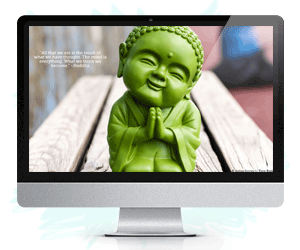
views

**This post contains a giveaway. Scroll to the bottom to learn more!
Burnout has been on my mind a lot lately, and that’s saying a lot since my burnout brain has trouble focusing these days.
Between working from home while raising two young kids and traveling back and forth across the country to spend time with a sick loved one, I’ve felt stretched in more directions than I thought possible. I know many of you can relate to the constant push to keep going even when your body and mind are begging for rest.
That’s why I’m excited to share a resource that feels both timely for me personally and, I think, deeply valuable for this community.
Therapist Morgan Johnson’s 8 Keys to Healing, Managing, and Preventing Burnout is part of the long-running 8 Keys series, which focuses on a variety of mental health issues.
What sets this book apart is its broad perspective: it doesn’t just talk about work stress, but also acknowledges the toll of caregiving, parenting, social pressures, and cultural systems. And it offers a wide range of practical, research-backed exercises to help us move through burnout and start to heal.
Instead of quick fixes, it gives you ways to reconnect with your body, your emotions, and your sense of meaning—so you can feel less depleted and more alive in your daily life.
I’ve chosen three exercises from the book that stood out to me as especially powerful. Each one is simple, actionable, and surprisingly effective. I hope you’ll find them as helpful as I did!
When you experience significant internal tension and anxiety, you can reduce stress by up to 50% by simply noticing and naming your state.
—David Rock
Goal
To get familiar with interpersonal neurobiologist Dan Siegel’s technique “Name it to tame it” (Siegel, 2013) to downregulate—calm—the threat detection centers in your brain and help decrease distress. This can be used both individually and in relationships and families.
Side quest for parents: Search “Dan Siegel hand-brain model video,” which helps kids as young as 5 begin to understand how their brain works and impacts changes in emotions.
Instructions
Please read Siegel’s (2023) description below and the example that follows. Then, complete the subsequent prompts to help you think through how you might use this in a practical way in your own unique context.
In the brain, naming an emotion can help calm it. Here is where finding words to label an internal experience becomes really helpful. We can call this “Name it to tame it.” And sometimes these [automatic] states can go beyond being unpleasant and confusing—they can even make life feel terrifying. If that is going on, talk about it. Sharing your experience with others can often make even terrifying moments understood and not traumatizing.
For example, imagine you’ve arrived home from work—which already felt like one of the longest shifts in recorded history—and you are exhausted and overstimulated. Today, you helped everyone and their dog, just not really yourself. When you walk in the door at home, your toddler is having a meltdown on the floor, screaming bloody murder. Your partner gives you the “S.O.S.” look.
Even if you do need to lend a hand in the moment, you can quite literally calm your body in this moment of stress just by naming it, something like, “I’m feeling overwhelmed.” If your partner then says, with a supportive tone, “You’re overwhelmed—was it a long shift?”, that’s even better, because now the primitive parts of your body sense, “I’m not alone here.”
Other Examples of Naming Your Internal Experiences
Please note: Depending on the situation/context, you can name things in many different ways:
In your life presently, if you wanted to practice naming things aloud, who might be a safe person/people to try this with? Who might not be a good candidate?
If sharing this way is not something you’ve really done before, what might you say to recruit someone you trust? (For example, “I’ve read that just saying out loud how I feel might help with my stress. Would it be okay if sometimes I let you know that I just need someone to listen and not give advice?”)
How was talking about feelings modeled in your environment growing up? Are there any parts of you that feel like this is a bad idea or like it would not be helpful to name things?
Feel invited to design your own experiment! Perhaps you let your partner know that you’re going to “name it to tame it” when you come in the door at the end of the day. Notice what it feels like before and after you put words to your state. Does it work better if you write it in a journal? If you say it out loud? If you name it to a friend? Everyone is different, so give yourself some grace and permission to try multiple approaches.
Peace is joy at rest, and joy is peace on its feet.
—Reverend Veronica Goines
Goal
To assess your current physical activity level relative to your abilities and to think through some ways to keep your body moving while minimizing/removing body negativity.
Instructions
Read through the following brief definition of joyful movement, some examples from me, and then respond to the prompts that follow, jotting down any notes that feel helpful.
Joyful movement: movement that is fun and enjoyable, not punishing or for the sole purpose of making/keeping your body smaller. (Tribole & Resch, 2017)
Potential sources of joyful movement include:
Please note: Be aware that emotional and mental wellness can be negatively impacted if movement is motivated solely by self-critical thoughts, fear, or punishment. Workouts that have an exclusively brutal, self-punishing feel confuse the primitive parts of your body into thinking you’re not safe. Joyful movement, in contrast, gives your body signals of safety.
Do you already have an intentional routine including physical movement or exercise? How consistent is it?
What do you notice about your thoughts about yourself when you’re about to move, exercise, or work out? While you’re active? After you’ve finished?
What kinds of physical activities/movement have tended to make you feel joyful, during and after? If it’s been a while, think about what you liked to do as a kid or in school (e.g., walking the dog, playing outside, taking a hike, biking to work).
If you don’t already have a routine that includes a little joyful movement at least once a week, what is one way you could add in half an hour, even 10 minutes, without significantly disrupting your schedule?
If you frequently think, “I have no free time!” or feel like, “When am I supposed to do more things?!”, please know that small things daily often have the biggest impact. Where are there some small moments in your day-to-day when you could move your body in a way that feels joyful (or distinctly not awful)?
Hint: Clients often report that transitions, such as going from work to home, provide solid opportunities for a little focus on joyful movement (e.g., getting in/out of bed, walking to the car, going to the grocery store).
Caring for myself is not self-indulgence. It’s self-preservation.
—Audre Lorde
Goal
To get familiar with some ways to feel refreshed and reinvigorated and to come up with some ideas for how to use your precious free time in ways that are actually renewing.
Instructions
Read through the brief summary of research findings from the 2021 study by Clément Ginoux, Sandrine Isoard-Gautheur, and Philippe Sarrazin on activities for renewal from burnout, and then complete the prompts that follow.
Ginoux et al. (2021) found five characteristics of activities that most impact renewal and recovery from burnout:
When you think about your free time, which of these characteristics already describe the activities you engage in? How consistently do you have these experiences month to month?
If you haven’t been doing much with the little free time you have, which characteristic(s) might be the easiest to increase in or add to your present life? Which might be more challenging?
If you have very little free time and you wanted to curate an activity that includes two or more of the above characteristics, what might be some possibilities? What would absolutely not work?
If you draw a Venn diagram in your mind of your social connections—those associated with work and those outside of work—how much overlap is there?
If most of your social interactions involve people from work, how much time do you spend talking/thinking about work together outside of work? You need to spend time together that has absolutely nothing to do with work. How might you let a colleague know you’re working at this? Do you have any friends outside of work you haven’t seen in a while who might be fun to reconnect with? It can be worth checking out some meetups or local community organizations and events, if you are at this point thinking, but . . . I have no friends.
Positive social connection completes the stress cycle, as you know, and we’re healthier, medically and emotionally, when we sense that someone has our back when things get tough.
Relational Activity Add-On: If you work with your partner or loved one and it’s hard for you to spend time together without bringing up work, brainstorm one thing you could try together at least 30–60 minutes each week to disconnect from work. If you try it and like it, how can you carve out time for it regularly?
Reprinted from “8 Keys to Healing, Managing, and Preventing Burnout” Copyright (c) 2025 by Morgan Johnson. Used with permission of the publisher, Norton Professional Books, a division of W. W. Norton & Company, Inc. All rights reserved.
—
If you found these exercises helpful, I highly recommend grabbing a copy of the book. 8 Keys to Healing, Managing, and Preventing Burnout is full of practical tools you can return to whenever you need them.
You can order your copy here—and get 20% off and free shipping!
To enter to win one of THREE FREE COPIES (US only), join the Tiny Buddha mailing list here. I’ll email the winners on Monday, October 6th.
Lori Deschene is the founder of Tiny Buddha. She started the site after struggling with depression, bulimia, c-PTSD, and toxic shame so she could recycle her former pain into something useful and inspire others to do the same. You can find her books, including Tiny Buddha’s Gratitude Journal and Tiny Buddha’s Worry Journal, here and learn more about her eCourse, Recreate Your Life Story, if you’re ready to transform your life and become the person you want to be.
GET MORE FUN & INSPIRING IMAGES & VIDEOS.
This site is not intended to provide and does not constitute medical, legal, or other professional advice. The content on Tiny Buddha is designed to support, not replace, medical or psychiatric treatment. Please seek professional care if you believe you may have a condition.
Tiny Buddha, LLC may earn affiliate income from qualifying purchases, including from the Amazon Associate Program.
Before using the site, please read our Privacy Policy and Terms of Use.
 Though I run this site, it is not mine. It's ours. It's not about me. It's about us. Your stories and your wisdom are just as meaningful as mine. Click here to read more.
Though I run this site, it is not mine. It's ours. It's not about me. It's about us. Your stories and your wisdom are just as meaningful as mine. Click here to read more.


























Comments
0 comment